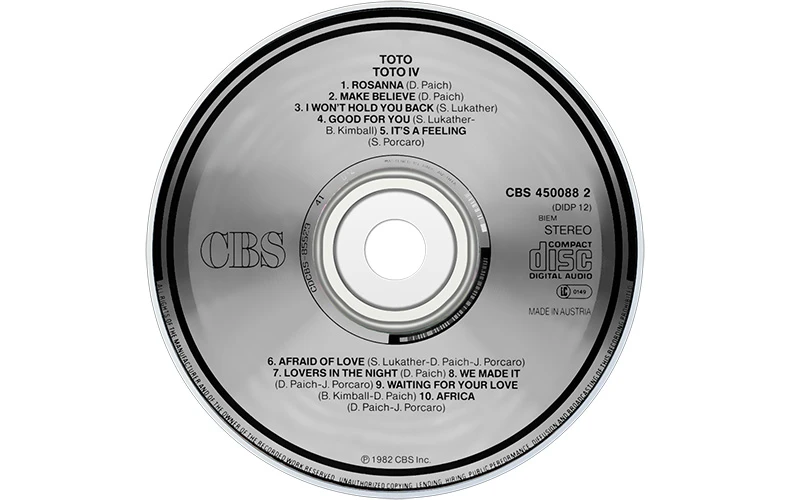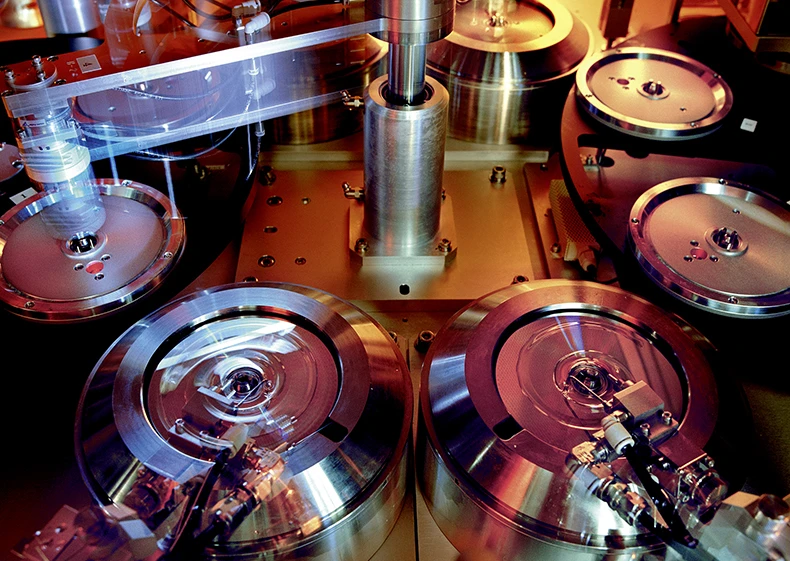Contact us
Wastewater-free production - for a modern, sustainable company like Sony DADC, this was the decisive criteria for a new wastewater treatment system at their enlarged production facility in Thalgau/Austria. Paul Weitnauer, Manager Mastering Engineering at Sony DADC, tells us in an interview. Which solution Sony DADC chose and what helpful tips there are for choosing the right wastewater treatment, can be found below.
The first disc produced in Austria was Toto IV. 2,500 discs were ordered at that time.

 Photo: Sony DADC Europe GmbH
Photo: Sony DADC Europe GmbH
The production of optical discs - such as CD, DVD or BluRay, is an injection moulding process, followed by a metallisation process (sputtering with aluminium) and protective lacquering. The replication of the discs is highly automated with cycle times in the range of seconds.
At the end of the production steps in the clean room, the label printing - often colourful and very artistic artwork - is applied. The discs are then packaged in the assembly area. From there, the packaged products are shipped to the various countries via our logistics department.
The template required for injection moulding - we call them internally “stamper” - is produced via a lithography electroforming (LiGA) in the Mastering department.

Photo: Sony DADC Europe GmbH
During the LiGA process in mastering, wastewater contaminated with nickel, caustic soda and other alkaline cleaning media is produced. During replication, on the other hand, maskings are used in the metallisation processes, some of which are chemically cleaned. Aluminum-containing, alkaline rinse water is resulting from thisprocess.
Our Mastering department was historically located at the Anif plant. In the course of merging the Anif and Thalgau plants, it was necessary to expand the building services area in Thalgau and build a plant suitable for the electroplating wastewater, as well as construct an entirely new plant for chemical mask cleaning.
In the course of these investments, we also implemented various process improvements that facilitated the use of vacuum distillation technology.
We subsequently evaluated the advantages and disadvantages of the different systems.
When moving the mastering department within the electroplating area, vacuum distillation can guarantee that all hazardous components can be separated and disposed of externally. Given the nature of the system,a transfer of the hazardous components into the municipal wastewater can be excluded. This made it much easier for us to obtain approval from the authorities to also set up an electroplating department at the Thalgau plant.
The saving of fresh water is an additional bonus for us, which helps us to meet our self-imposed goal of sustainable production of high-tech products in Austria.
Another important point was the limited space available at the Thalgau plant.

The ZLD post-concentrator saves another 50% in disposal costs thanks to its subsequent concentration.
The decisive factor for us was that the system operates automatically and non-stop without any major manual support effort. This is where the VACUDEST has an clear advantage over the physical-chemical precipitation.
In this year's peak season - the Christmas business is very important for us - the system provided a valuable contribution.
The insertion was indeed a highlight. What helped us the most was the "brains" and the meticulous preparation prior to the insertion. This quickly made it clear that we had to do some preliminary work by the construction companies. Concrete walls were cut open and fire doors enlarged.
For our electroplating area, a wastewater-free production has indeed been achieved. The distillate from the VACUDEST is further treated in an ion exchanger before subsequent use and is used in electroplating with a target conductivity value < 1 µS/cm.
I would make the decision for the technology of vacuum distillation again at any time. It is particularly critical to estimate the expected wastewater quantities for the design of the plant size. This is a big challenge in our industry, but we have successfully mastered it with the support of H2O.
It is extremely important to calculate the expected wastewater volumes and freshwater requirements. A detailed estimate of the correct plant size together with a good knowledge of the expected composition of the wastewater is key to success. H2O's application laboratory provided us with excellent support here. Definitely worth a look is also the new VACUDEST ZLD to even further minimise the residual volume to be disposed of.
You have questions on our VACUDEST systems?
Kindly contact us!
Your contact is:
Thomas Dotterweich
Senior Sales Engineer
+49 7627 9239-306
thomasm.dotterweich@h2o-de.com
You need consumables, spare parts or a maintenance date?
We will be pleased to assist you!
Your contact is:
Carles Fité
Technical Customer Support
+49 7627 9239-888
carles.fite@h2o-de.com
You want to be part of our team and create the wastewater-free future with us?
We will tell you how!
Your contact is:
Bettina Böhringer
Human Resources
+49 7627 9239-201
career@h2o-de.com